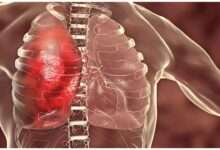
Primary liver cancer or hepatocellular carcinoma is a cancer that occurs spontaneously in the liver and develops directly in the liver cells. The patient may present with liver pain, fever, altered general condition, or jaundice. The treatment of primary tumors depends on the size and number of lesions, the extent of the disease, and the presence of cirrhosis.
Primary liver cancer: definition
Primary liver cancer or hepatocellular carcinoma is a cancer that occurs in the liver spontaneously , and develops directly at the expense of hepatic cells (liver cells).
Causes and risk factors of primary liver cancer
Primary liver cancer:
- Has been increasing for several years;
- Is more common in certain regions of the globe : Africa (tropical areas) and Southeast Asia;
- Occurs around age 60 in Europe and North America and around age 35 in Africa and Asia;
- Is mainly observed in humans;
- Is most often linked to the evolution of pre-existing cirrhosis . In France, cancerization of cirrhosis due to alcohol varies between 10 and 30%. In tropical areas (but not exclusively), cancerization is most often linked to cirrhosis of viral origin ( hepatitis B or C virus). When liver cancer develops on a liver showing no lesions of cirrhosis, the role of dietary factors has been put forward, and in particular that of certain toxins (aflatoxin polluting groundnut flour in Africa).
Symptoms of primary liver cancer
The patient may present with pain around the liver , fever , deterioration in general condition (weight loss, loss of appetite, fatigue) or jaundice ( yellow discoloration of the skin).








